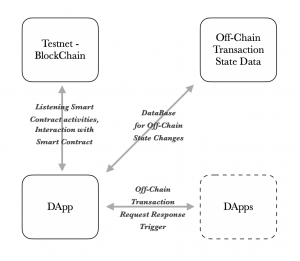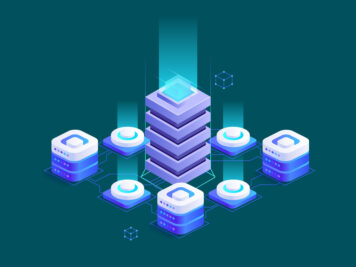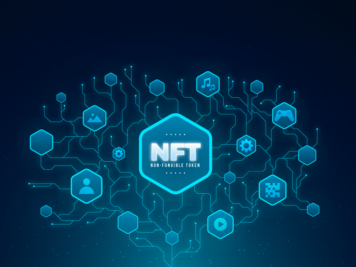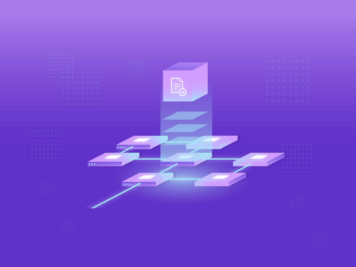As I explained in the previous blog, the State Channel solves blockchain scalability, transaction fees, and privacy concerns. In this blog, we’ll look at the potential use cases that can be implemented as decentralized applications (DApps) using State Channels and the approach involved.
For a quick recap of the previous blog, the State Channel is a technique designed to allow users to make multiple transactions without committing all of them to the Blockchain. In the traditional State Channel, the Smart-Contracts defines the initial state of the State Channel. Users can carry out an infinite number of transactions outside the Blockchain by making continuous changes, starting from the initial state. Any user can send the latest state as a closing statement to Smart-Contract on the Blockchain. Also, users can verify each state transition validity using Smart-Contract on the Blockchain.
The State Channel off-chain gives instant-finality and data-privacy with negligible transaction fees. This, in turn, has gone a long way in terms of establishing their importance in case of DApps scalability. Gaming DApps can use the scalability potential of State Channels, wherein participants either buy or sell game artefacts or indulge in gambling like in case of card games. Likewise, video streaming DApps can use State Channels to facilitate applications on a pay-per-use basis. Domains such as Supply Chain Management and P2P micro-payments can also benefit from the scalability and privacy potential of State Channels.
Use Case of State Channels: Supply Chain Management
Our businesses have widened globally, complicating the whole ecosystem of supply chain management. Let us consider the case of the food supply chain. Have we ever imagined the source from where we get our food?
The supply chain in the food industry is defined by associating the following:
- Crop Origination
- Food Processing at Refineries
- Distribution of processed food to retailers
- Selling of Food Items to Consumers
Since the food supply chain consists of millions of people worldwide with tons of raw materials and food crops, it becomes challenging for the food manufacturers and consumers to know where the different components of the food item belong.
The supply chain’s contracts can be quite complicated, costly, and susceptible to errors due to the involvement of paper-based trails for the change of ownership, letters of credit, bills of lading, and complicated payment terms. Therefore, we can use State Channels to bring in transparency and real-time traceability in the whole supply chain system.
How do State Channels Help?
Supply chain management consists of raw materials, manufacturing, distribution, and consumers. The quality of each raw material, the manufacturing processes, and distributors are tagged uniquely using Hashing algorithms.
Any product includes various raw materials and goes through different manufacturing processes. At the end of the production cycle, they are delivered to the consumer. Therefore, the product off-chain state should keep a record of raw materials, manufacturing processes, and shipping processes.

Figure (1): – State Channel between Supplier and Manufacturer
A Supplier supplies different raw materials to the manufacturer. This process will run in its separate State Channel. By the end of the process of purchasing, the manufacturer receives raw materials from different suppliers. Since these states were finalized already, they will be updated on the Blockchain and represented by the Non-Fungible tokens.

Figure (2): – State Channel for manufacturing Process
The manufacturing step includes multiple processes and consumes a variety of raw materials. When the product is ready, its state will consist of used raw materials token tag from the previous ERC20 tokens and processes tag. The Distribution process will deliver products to retailers, and the end consumer can get it from the retailer.

Figure (3): – State Channel for the delivery process

Figure (4): – State Channel for Retailer
In each process, the off-chain states can include different details and can be verified using a specific verification pattern. These details can be either product’s raw materials, manufacturing process information, or payment information. Therefore, the final state will update the ownership of the product and transfer the equivalent coins to the respected wallets on the Blockchain.
Here, we do not need to attach original letters of credit, bills of lading on the Blockchain. Instead, we should attach hash of that document on the Blockchain, so that users can compare document hash with hash updated on the Blockchain and verify authenticity of the original bills.
In Figure (4), the consumer can verify the product manufacturing details and the delivery process using the finalized state of Figure (3) State Channel. The finalized state from Figure (2) State Channel can be linked-to the verification process of the State Channel in Figure (3). The finalized state of the raw materials purchasing process from Figure (1) State Channel will be attached to the product being made in the State Channel in Figure (2).
This will bring transparency, privacy, and cost reduction in the whole supply chain management.
DApp Components
DApp built using State Channels would be based on a similar set of components, every DApp consists of a user DB component to ensure off-chain states security and a client application responsible for interacting with the Blockchain smart contract and with other participants.
The Smart contract defines the details that are going to be a part of the state structure. The same state structure will be used in the digital signature and verification process. Example: – A State Channel structure for chess game must hold chessboard state, chessboard id, and the Smart-Contract address.
The client application opens a State Channel on the Blockchain, and then the smart contract will initialize the State Channel using given inputs and predefined business logic. This business logic could require an on-chain confirmation from other participants before the State Channel goes into the active state. Once State Channel is activated, the initial state has been updated and available to all participants on the Blockchain. The client applications use this initial state and start off-chain transactions among them. The client applications must keep the latest off-chain state precisely for that they can use separate secure DB components. The non-tempered latest state will prevent all malicious actions of other participants.
Figure (5) shows a simplified architectural overview for a State Channel DApp.

Figure (5): – State Channel Generic Architecture
Conclusion
State Channels trade-off speed, finality, and transaction cost along with unparalleled security. We kept off-chain transaction states in a separate DB component to minimize the security trade-off. We make sure the uniqueness of the state details across the Smart-Contracts on the Blockchain network to prevent replay attacks.
I hope you find this article useful and insightful. To deep dive into some of our work around State Channels, you can check out the GitHub repository. Happy reading!









